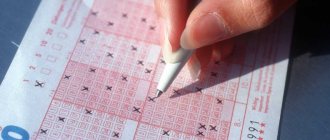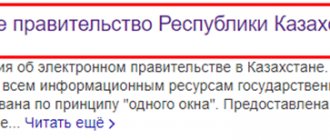UTII is a special taxation scheme. This special mode can be used by both individual entrepreneurs and LLCs. During its existence, the tax regime has undergone some changes: at first, those who were engaged in certain types of activities were obliged to transfer to it, now UTII is a voluntary regime - you can switch to it and withdraw from it at any time.
Important! The effect of Chapter 26.3 of the Tax Code of the Russian Federation was extended for another three years, so individual entrepreneurs and LLCs will be able to continue to apply the imputation. It will be valid until January 1, 2022.
This service can greatly facilitate the maintenance of UTII and other nuances of accounting, in order to minimize risks and save time.
UTII: who can apply
In terms of who can pay tax in accordance with UTII, there have been no significant changes in 2021. Individual entrepreneurs and LLCs engaged in activities provided for by law have the right to pay UTII. The full list is prescribed in the Tax Code (Article 346.26), but the list valid in a specific region is approved by the regional authorities in the form of a law.
It is not necessary to use UTII, this is a voluntary decision of the individual entrepreneur - you can use this special regime at your own request if your activity is on the approved list. It is also possible to use UTII together with other taxation schemes, for example the simplified tax system.
UTII can be used if you provide or carry out:
- household services (need to be checked according to OKUN); Important! It is necessary to say separately about household services, since a modified list of codes has been in effect for them since 2022. This is due to the transition to the new All-Russian Classifier OK 029-2014 (NACE Rev. 2). The list of codes for types of economic activities related to household services and the list of service codes related to household services are determined by Order of the Government of the Russian Federation No. 2496-r dated November 24, 2016.
- veterinary services;
- services related to motor transport (this includes passenger and freight transportation, repair/maintenance work and vehicle washing, rental of parking spaces);
- retail trade;
- catering services;
- trade, which is classified as delivery/carry-out;
- placement of outdoor advertising;
- temporary accommodation/residence of the population (on an area of up to 500 m2);
- other.
There is a restriction on points 4 and 5: this activity must be carried out without a hall (trading or for serving visitors) or with a hall of up to 150 m2.
For individual entrepreneurs who want to switch to UTII, it is recommended to study the entire list of activities in the Tax Code and the local laws of the subject where the individual entrepreneur plans to carry out its activities. There may be cases when some types of activities are suitable for UTII in one subject of the Russian Federation, and are not included in their list in another.
To switch to UTII, an individual entrepreneur must assess his business for compliance with the restrictions for using the special regime. So, what parameters should an individual entrepreneur and its activities meet:
- the average number of individual entrepreneur employees for the previous year is less than 100;
- An individual entrepreneur cannot use UTII if there is a simple partnership or contractual terms of trust management of property apply;
- Individual entrepreneurs do not transfer gas stations for temporary possession/use.
For LLCs wishing to use UTII, it is important that they are not considered the largest taxpayers, and the share of other legal entities in their authorized capital is no more than 25%.
Important! We all remember that a trade tax was introduced in 2015, although so far it does not apply to everyone. In this regard, UTII can no longer be applied to those types of activities for which a trade tax has been introduced in the municipality.
We wrote a long time ago that from 2015, companies and individual entrepreneurs on UTII will need to pay property tax if the basis for calculating the tax on them is determined as the cadastral value. This applies to buildings, for example, business centers or office premises, which are directly used in activities, income from which is taxed under UTII. There are more regions that have adopted relevant regulations in the last two years, and accordingly, the number of payers of this tax will increase in the coming year. Let us remind you that special regimes do not exempt individual entrepreneurs and legal entities from paying property tax, calculated based on the cadastral value.
The concept of “Unified tax on imputed income (UTII)”
The unified tax on imputed income (UTII) is a system of taxation of certain types of activities of entrepreneurs.
The UTII tax is not levied on an individual entrepreneur or a legal entity, but on the type of entrepreneurial activity
UTII can be combined with the OSN (General Taxation System) or the Simplified Taxation System (USN).
UTII differs from other taxation systems in that the tax in this case is taken from imputed income (and not from actually received).
UTII: how an individual entrepreneur can become a tax payer
Here, in 2022, there were also no significant changes. To officially become an imputation payer, an individual entrepreneur needs to submit his application to the tax office. It is drawn up according to a special approved form No. UTII-2 (for LLCs - No. UTII-1). This must be done within five days from the start date of the activity that gives the right to use this special regime.
There is usually no need to provide additional documents. The tax office may ask the individual entrepreneur to provide copies of certificates of registration and registration as an individual entrepreneur (certified), as well as a passport.
If you are just opening an individual entrepreneur, then an application for the use of UTII is submitted along with a set of documents when registering you as an individual entrepreneur.
The inspection must issue you a corresponding notification within up to five days. The date of registration corresponds to the start date of activity, possible in accordance with the requirements of UTII (it must be indicated when filling out the application).
An individual entrepreneur must register under UTII, even if he is already registered with the same tax office, but for other reasons. The application is submitted at the place where the business is actually carried out. The exceptions include: distribution trade, advertising on vehicles, passenger and cargo transportation. It is important to remember that if the activities of an individual entrepreneur extend to several municipalities, then you must register in each of them.
What are the consequences of failure to comply with this clause? If an individual entrepreneur does not submit an application for the application of UTII within the required period, then the tax authorities have the right to hold him accountable and collect a fine of 10% of income for this period (but not less than 40 thousand rubles).
Since the UTII regime is voluntary, you can refuse it. For this purpose, the individual entrepreneur is also required to submit an application drawn up in form No. UTII-4 (for LLCs - No. UTII-3) within five working days from the date of termination of the activity giving the right to use UTII, or transition to another taxation scheme.
What fixed payments should I pay?
Individual entrepreneur on a patent - what taxes to pay, mandatory contributions
The amounts of mandatory contributions for Russian individual entrepreneurs under the imputed taxation regime are established by the norms of Art. 430 of the Tax Code of the Russian Federation and in 2022 are:
- contribution to the Pension Fund, provided that the income for the calendar reporting year did not exceed 300 thousand rubles. — 29.3 thousand rubles;
- contribution to the Pension Fund, provided that the income for the calendar reporting year exceeded 300 thousand rubles. — 29.3 thousand rubles. + 1% of the excess amount (not more than 234.8 thousand rubles);
- contribution for compulsory health insurance - 6.8 thousand rubles.
Important! For failure to pay due fees, a fine in the prescribed amount + a penalty for each day of delay will be charged.
Imputation: how to calculate tax
Important! Imputation tax is calculated at a rate of 15% of the taxable base - this rate is standard by law. But since 2016, authorities of municipalities, city districts and federal cities have been given the right to reduce it. The tax rate can be set from 7.5 to 15%.
This may be a big plus for some taxpayers. Why is this so? It is beneficial to use UTII when the actual income is greater than the imputed one, since the tax is calculated from the latter. Plus, there is also the possibility of using a reduced rate - the tax burden for some will be reduced.
Imputation tax is calculated at a rate of 15% of the taxable base. For UTII, the base is imputed income - that which can be received by an individual entrepreneur whose business has certain physical characteristics. It is considered as the product of the basic profitability and the actual expression of a particular physical characteristic and is adjusted by special coefficients.
For simpler and more convenient accounting and tax accounting for UTII, we recommend using the “My Business” service.
The algorithm looks like this:
VD (base) = DB * (F1+F2+F3) * K1 * K2, where
VD – imputed income,
DB – basic profitability,
F – physical indicator of a business for a specific month (3 values = 3 months in a quarter),
K1 – deflator installed for UTII;
K2 – coefficient for database adjustment.
Let's look at each element of the formula.
Basic profitability is the potential amount of income, that is, the amount that an individual entrepreneur can receive as a result of work at the end of the month. Indicated in the Tax Code as a value per unit of physical indicator. Both of these values are approved by the Tax Code for all types of activities corresponding to UTII (Article 346.29).
Example: the imputed income of an individual entrepreneur providing household services, without taking into account adjustments for the month, will be the product of the number of employees and the basic income of 7,500 rubles. Let's say there are only 5 people working, their number did not change in the first quarter.
VD (month) = 7,500 * 5 = 37,500 rubles
VD (1st quarter) = 7,500 * (5+5+5) = 112,500 rubles
Deflator (2019) = 1.915, and let the value of K2 be 0.8. Let's calculate the adjusted value of the individual entrepreneur's imputed income for the quarter:
- VD (1 quarter) = 7,500 * (5+5+5) * 1,915 * 0.8 = 172,350 rubles
- UTII = 172,350 * 15% = 25,853 rubles
Physical indicators. This is some characteristic of an individual entrepreneur’s business. Each activity has its own indicator.
Example: for cargo transportation, the number of vehicles is taken into account; for passenger transportation, the number of boarding places is taken into account.
The individual entrepreneur is obliged to organize the recording of such indicators; a journal in free form is sufficient, which will reflect the change in its value by month. For LLCs on UTII, such accounting is regulated, since they are entrusted with the responsibility for maintaining accounting records.
Odds. These are adjustment parameters. K1 is set by the Ministry of Economic Development; in fact, it is a deflator. Its validity period is one year. In 2022, the K1 value was 1.868, and from January 1, 2022 – 1.915.
K2 is approved by the authorities of the constituent entity of the Russian Federation, taking into account the specifics of doing business in the territory of the region / territory / republic. Not only the coefficients between subjects of the Russian Federation may differ, but also the coefficients between regional territories within the same region.
It is possible to set K2 within the range from 0.005 to 1.
It is also possible that it is not the coefficient itself that is set, but its parts—subcoefficients.
Example: on the territory of a certain city it is established that the value of K2 is calculated as the product of the coefficients K2.1 and K2.2. For your activity K2.1 = 0.4, K2.2 = 0.9.
When calculating UTII you must use the K2 value:
K2 = 0.4 * 0.9 = 0.36
K2 is set for a year; if a new law has not been adopted on the territory of a constituent entity of the Russian Federation, then the K2 values of the previous year apply in the new year. If there is no such regulatory act on the territory of a subject of the Russian Federation, then K2 = 1 is used by default.
When calculating UTII tax payable, it is important to take into account insurance premiums. So, what fees are generally paid:
- Individual entrepreneurs without employees pay insurance premiums for themselves;
- Individual entrepreneurs with employees pay insurance premiums for their employees at current rates and for themselves.
When applying UTII, insurance premiums can be deducted at the time of tax calculation. Since the tax period for imputation is a quarter, only contributions transferred for the same period can be deducted from the tax amount to be transferred in a particular quarter.
Individual entrepreneurs are required to transfer contributions in a fixed amount for themselves strictly before December 31 of the reporting year. The amount of these contributions for 2021 is 36,238 rubles (29,354 rubles for pension insurance and 6,884 rubles for medical insurance).
You can pay as before: you can divide this amount into four parts and pay quarterly, or you can pay once.
If the annual income of an individual entrepreneur exceeds 300 thousand rubles, then the difference in excess must also be paid 1% to the Pension Fund. The deadline for paying 1% in the Pension Fund is July 1 of the next year, but it is not prohibited to transfer money in the current year.
Important! In 2022, the total amount of pension insurance contributions (29,354 rubles + 1% of the excess) cannot be more than 234,832 rubles.
An individual entrepreneur can deduct:
- all insurance premiums are borne by himself if he does not hire employees;
- insurance premiums for yourself and for employees, if any (but the tax can be reduced only by 50% of its amount) - this is also one of the changes, starting in 2022; previously, individual entrepreneurs with employees could only deduct contributions for employees.
Taxes for individual entrepreneurs in 2022 with employees
Entrepreneurs with employees, in addition to personal taxes and insurance contributions “for themselves,” must pay insurance contributions from wages and other remuneration in favor of employees. The amounts of contributions “for employees” can reduce (in full or with restrictions - depending on the taxation system applied) the taxes of the individual entrepreneur himself.
Calculate contributions “for yourself” and for employees when combining simplified taxation system and PSN Calculate for free
Also, entrepreneurs who have employees must perform the duties of tax agents for personal income tax. The exception is “self-employed” individual entrepreneurs. As already mentioned, they, in principle, do not have the right to hire employees.
Let's look at calculations for UTII using examples
Example 1
Imagine that you are an individual entrepreneur on UTII in 2022. You don't have any employees. Imputed income in annual terms, taking into account all adjustment factors, is 270,000 rubles. How to calculate tax payable for the year?
UTII = 270,000 * 15% = 40,500 rubles
You paid fixed insurance premiums for yourself in the form of 36,238 rubles.
UTII (payable) = 40,500 – 36,238 = 4,262 rubles
If the imputed income for the year is 600 thousand rubles, the calculation will look like this:
UTII = 600,000 * 15% = 90 thousand rubles
You transferred funds to insurance funds, then:
UTII (payable) = 90,000 – 36,238 = 53,762 rubles
But: income exceeded 300 thousand rubles, so you need to make an additional contribution to pension insurance before April 1 of the next year in the amount of 1% of the difference between income and 300 thousand:
(600,000 – 300,000) * 1% = 3,000 rubles
If the imputed annual income is significantly higher, for example, 16,000,000 rubles, then the calculation will look like this:
UTII = 16,000,000 * 15% = 2,400,000 rubles
You have paid into the insurance funds for yourself, then:
UTII (payable) = 2,400,000 – 36,238 = 2,363,762 rubles
Since the income exceeded 300 thousand rubles, you need to pay an additional 1% of the excess to the Pension Fund before April 1 of the next year:
(16,000,000 – 300,000) * 1% = 157,000 rubles, but:
The maximum possible amount for pension contributions in 2022 is 234,832 rubles, of which you have already paid 36,238 rubles. The remainder of this limit we have is 234,832 – 36,238 = 198,594 rubles. Calculated 157 thousand rubles. the additional contribution does not exceed this amount, so you must pay the entire 157 thousand rubles.
Example 2
Imagine that you are an individual entrepreneur, your type of activity is retail trade, the hall area is 30 m2. You don't have employees. The basic monthly income in this case is 1,800 rubles. The deflator for 2021 is 1.915, the adjustment factor will be taken as 0.8. How to calculate tax for each quarter of 2022?
Let's calculate the imputed income for the 1st quarter:
WD = 1,800 * (30+30+30) * 1.915 * 0.8 = 248,184 rubles
UTII = 248,184 * 15% = 37,228 rubles
Let's assume that you have already paid all insurance premiums in the first quarter, then the amount payable will be:
37,228 – 36,238 = 990 rubles
Next, we will calculate the tax payable in the 2nd quarter, taking into account that the retail space remains unchanged:
VD = 248,184 rubles
UTII = 248,184* 15% = 37,228 rubles
We have already taken into account all insurance premiums in the 1st quarter, so the tax payable is 37,228 rubles.
In addition, since annual income is already more than 300 thousand rubles, you can start paying 1% of the excess:
Additional contribution to the Pension Fund = (248,184 + 248,184 – 300,000) * 1% = 1,964 rubles
Since you pay this additional contribution already in the 3rd quarter, then deduct it when calculating the tax based on the results of the 3rd quarter.
Calculations in the 3rd quarter:
VD = 248,184 rubles, UTII = 37,228 rubles
Tax payable:
37,228 – 1,964 = 35,264 rubles
Additional contribution to the Pension Fund = (3 * 248,184 – 300,000) * 1% – 1,964 = 2,482 rubles
Calculations for the year (4th quarter):
VD = 248,184, UTII = 37,228 rubles
Tax payable:
37,228 – 2,482 = 34,746 rubles
Additional contribution to the Pension Fund = (4 * 248,184 - 300,000) *1% - 1,964 - 2,482 = 2,481 rubles (you have the right to deduct this amount when calculating tax for the 1st quarter of the next year)
Eventually:
VD (for the year) amounted to 992,736 rubles
Contributions to funds 36,238 rubles - fixed payment, 6,927 rubles - 1% of the excess (4,446 rubles paid this year, 2,481 rubles - next year).
Total UTII (payable) = 108,228 rubles
In the case when payments of insurance premiums for yourself are made in equal parts for the 3rd quarter - 9,060 rubles and the balance in the fourth - 9,058 rubles, then the calculations will look like this:
UTII (Q1) = 37,228 – 9,060 = 28,168 rubles UTII (Q2) = 37,228 – 9,060 = 28,168 rubles UTII (Q3) = 37,228 – 9,060 – 1,964 = 26,204 rubles UTII ( 4 quarters) = 37,228 – 9,058 – 2,482 = 25,688 rubles
In this case, there will be no difference in how you pay contributions for yourself - in one payment or in equal quarterly installments.
Now let’s change the conditions of the example, reducing the area of the hall to 15 m2.
Let's calculate the imputed income for the 1st quarter:
VD = 1,800 * (15+15+15) * 1.915 * 0.8 = 124,092 rubles UTII = 124,092* 15% = 18,614 rubles
Let's assume that you have already paid all insurance premiums in the first quarter, then the amount of tax payable will be zero, since:
18,164 – 36,238 = — 18,074 rubles
Next, we will calculate the tax payable in the 2nd quarter, taking into account that the retail space remains unchanged:
VD = 124,092 rubles UTII = 124,092 * 15% = 18,164 rubles
We have already taken into account all insurance premiums in the 1st quarter, respectively, the tax payable is 18,164 rubles
Calculations in the 3rd quarter:
VD = 124,092 rubles, UTII = 18,164 rubles
The tax payable will be the same 18,164 rubles, since we have nothing left to deduct.
Additional contribution to the Pension Fund = (3 * 124,092 – 300,000) * 1% = 723 rubles
Calculations for the year (4th quarter):
VD = 124,092 rubles, UTII = 18,164 rubles
Tax payable:
18,164 – 723 = 17,441 rubles
Additional contribution to the Pension Fund = (4 * 124,092 – 300,000) *1% – 723 = 1,241 rubles (you have the right to deduct this amount when calculating the tax for the 1st quarter of the next year)
Eventually:
PV (for the year) amounted to 496,368 rubles
Contributions to funds 36,238 rubles - fixed payment, 1,964 rubles - 1% of the excess (723 rubles paid this year, 1,241 rubles - next year).
Total UTII (payable) = 53,769 rubles
In the case when payments of insurance premiums for oneself are made in equal quarterly installments, the calculations will look like this:
UTII (Q1) = 18,164 – 9,060 = 9,104 rubles UTII (Q2) = 18,164 – 9,060 = 9,104 rubles UTII (Q3) = 18,164 – 9,060 = 9,104 rubles UTII (Q4) = 18,164 – 9,058 – 723 = 8,383 rubles
The total tax for the year will be 35,695 rubles, which is less than when paying insurance premiums for yourself in one payment. The difference arises due to the fact that when paying all contributions in the 1st quarter, we have to deduct the entire amount paid at once, although the calculated tax amount is less. As a result, it turns out that we do not fully use the possibility of deduction; 18,074 rubles are simply burned out instead of being taken into account later.
Example 3
Imagine that you are an individual entrepreneur providing car washing services. You have hired 6 employees. Let's calculate the tax for the 1st quarter of 2022. The basic income per person is 12,000 rubles. The physical indicator - the number of employees together with individual entrepreneurs is 7. K1 = 1.915, K2 = 0.8. You paid insurance premiums for your employees in the amount of 60,000 rubles and part of the contributions for yourself in the amount of 9,060 rubles.
VD = 12,000 * (7+7+7) * 1.915 * 0.8 = 386,064 rubles
UTII = 386,064 * 15% = 57,910 rubles
You have the right to reduce the tax by the amount of insurance premiums for employees and for yourself, but not more than 50%. The total amount of contributions was 69,060 rubles, which is more than the amount of the calculated tax.
This means that we can reduce it only by 57,910 * 50% = 28,955 rubles.
UTII (payable) = 57,910 – 28,955 = 28,955 rubles
Additional contribution to the Pension Fund = (386,064 – 300,000) * 1% = 861 rubles.
Important! Separately, I would like to dwell on reimbursement of expenses for the purchase of an online cash register. Clause 2, 3 art. 1 of Law No. 349-FZ of November 27, 2017. Entrepreneurs are given the opportunity to deduct from the accrued UTII tax the costs of purchasing an online cash register in an amount not exceeding 18 thousand rubles.
Expenses may include not only the cost of the cash register itself, but also the fiscal drive, software, the cost of setting up the cash register, and upgrading it, if necessary.
Also, in order to take advantage of the deduction, you will need to follow some rules:
- The cash desk must be included in the official register of the Federal Tax Service and registered with the local tax office.
- it must be used in activities subject to UTII.
- the costs of purchasing the cash register were not previously claimed for reimbursement and were not included in expenses under other taxation systems.
It will be possible to take into account the costs of purchasing an online cash register no earlier than it is registered with the tax office. For example, we register in March 2021, and set it for deduction in the second quarter of 2022.
If the accrued tax amount is less than the amount of expenses incurred, then the balance can be taken into account in subsequent tax periods. This was stated in the official tax letter No. SD-4-3/ dated April 19, 2018.
Example # 2. Calculation of payments to the Pension Fund
To calculate, we will use the previous example:
1,800 × 114 × 1.796 × 0.306 = RUB 112,772.99
RUB 112,772.99 – estimated amount of income (tax base for calculating UTII).
Let's assume that our individual entrepreneur worked throughout the year, then
RUB 112,772.99 × 4 quarters = 451,091.98 rubles.
RUB 451,091.98 – the amount of expected income for the year. This figure is above 300 thousand. Accordingly, the special regime officer must pay 1%.
RUB 451,091.98 – 300,000 = 151,091.98 rubles.
RUB 151,091.98 × 1% = 1,510.92 rubles.
This amount must be transferred to the budget no later than 01.04
Important. When transferring contributions from incomes of more than 300 thousand, the KBK from 2016 differs from the KBK for insurance premiums.
How does an individual entrepreneur report on imputation?
To prepare and submit reports on UTII, we also recommend using the “My Business” service. It's quick and easy.
An individual entrepreneur on UTII must provide reporting to government agencies that corresponds to the chosen tax regime:
- by the 20th day of the first month of the quarter, you must submit your UTII tax return for the past quarter;
- Individual entrepreneurs with employees need to submit reports on employees.
Organizations also submit financial statements on UTII.
As for the declaration, there is one nuance: changes have been made to it this year. A new 4th section has appeared in which it will be possible to reflect the costs of purchasing an online cash register; a corresponding line has also appeared in the 3rd section. Minor changes have also been made to the title page.
Otherwise, the requirements for filling out the declaration remain the same: the declaration must be completed without blots or errors that could change the amount of tax payable. It can be submitted either in paper or electronic form to the inspectorate at the place of registration as a UTII payer.
Insurance premiums for yourself
Let's start with payments for compulsory pension and health insurance, which many entrepreneurs call taxes. Methodologically, this is incorrect, because contributions are not considered gratuitous payments, but accumulate in the personal account of the insured person. From these funds, among other things, the entrepreneur will be paid a pension. But for business, both contributions and taxes are taken into account in the total tax burden, so it is necessary to say this.
The amount of insurance premiums for individual entrepreneurs for themselves in 2022 is 43,211 rubles plus an additional contribution of 1% on annual income exceeding 300,000 rubles. Contributions for yourself must be paid in all taxation systems, except for the NAP.
The main differences from UTII with hired employees
Without exception, all individual entrepreneurs on UTII, who use hired personnel in their work, take on the responsibilities of generating and timely submitting a report on:
- accrued and withheld taxes on personal income;
- personalized tax;
- withheld insurance premiums and deductions.
The presence of staff increases the load on individual entrepreneurs
In addition, without exception, all employers of individual entrepreneurs who use the labor of a hired worker undertake the following obligations:
- maintain, in accordance with the rules of the federal legislation of the Russian Federation, personnel records;
- exercise strict control over the protection of the working conditions of hired employees;
- timely determine the amount and transfer wages to hired staff;
- determine and maintain assumed obligations for insurance premiums and income taxes in particular;
- timely fill out and submit reporting documentation on hired personnel to the Federal Tax Service for verification.
Fines
It must be remembered that the main reporting documentation for hired staff is the declaration. It is subject to submission for inspection to the tax authority at the place of business activity, with the exception of: retail trade, freight transportation and other types of business for which delivery is carried out at the place of registration.
If the rules are ignored, administrative liability is provided in the form of fines and penalties. Therefore, it is better not to take risks, but to complete everything correctly and on time.
*Prices are as of July 2022.




